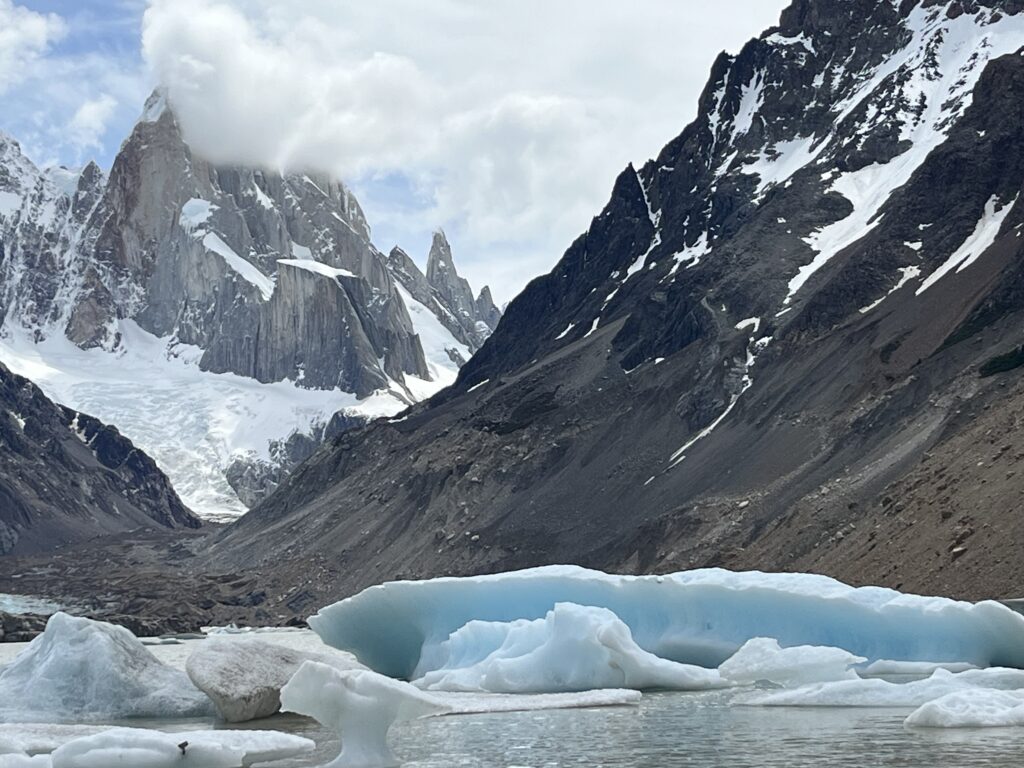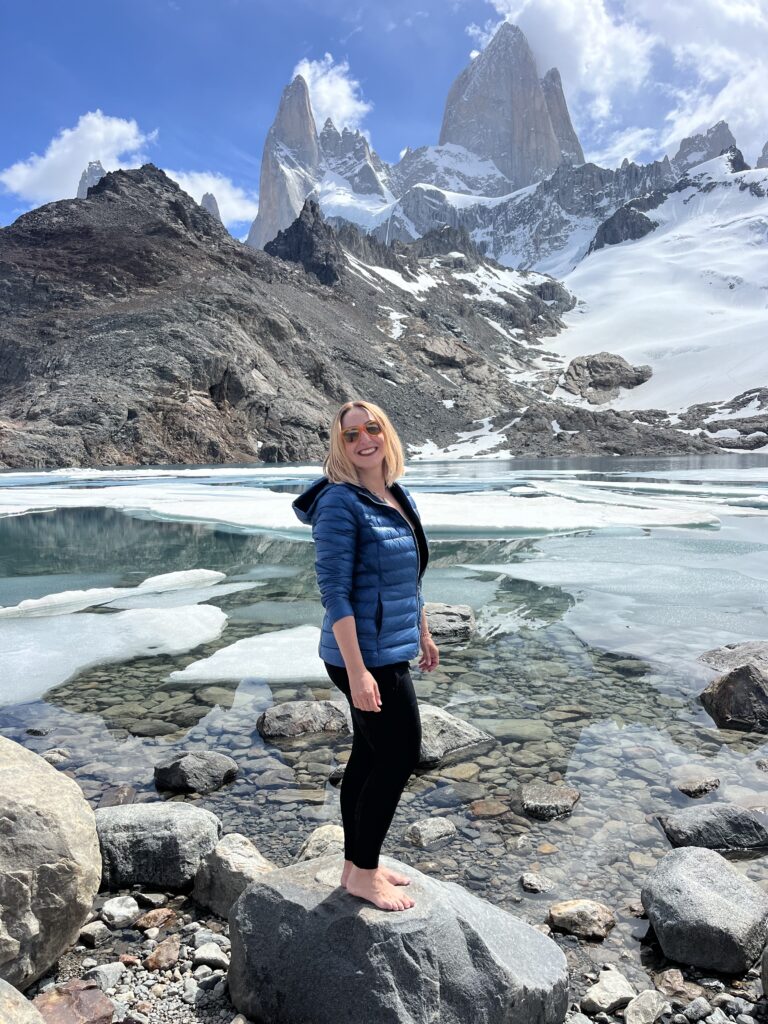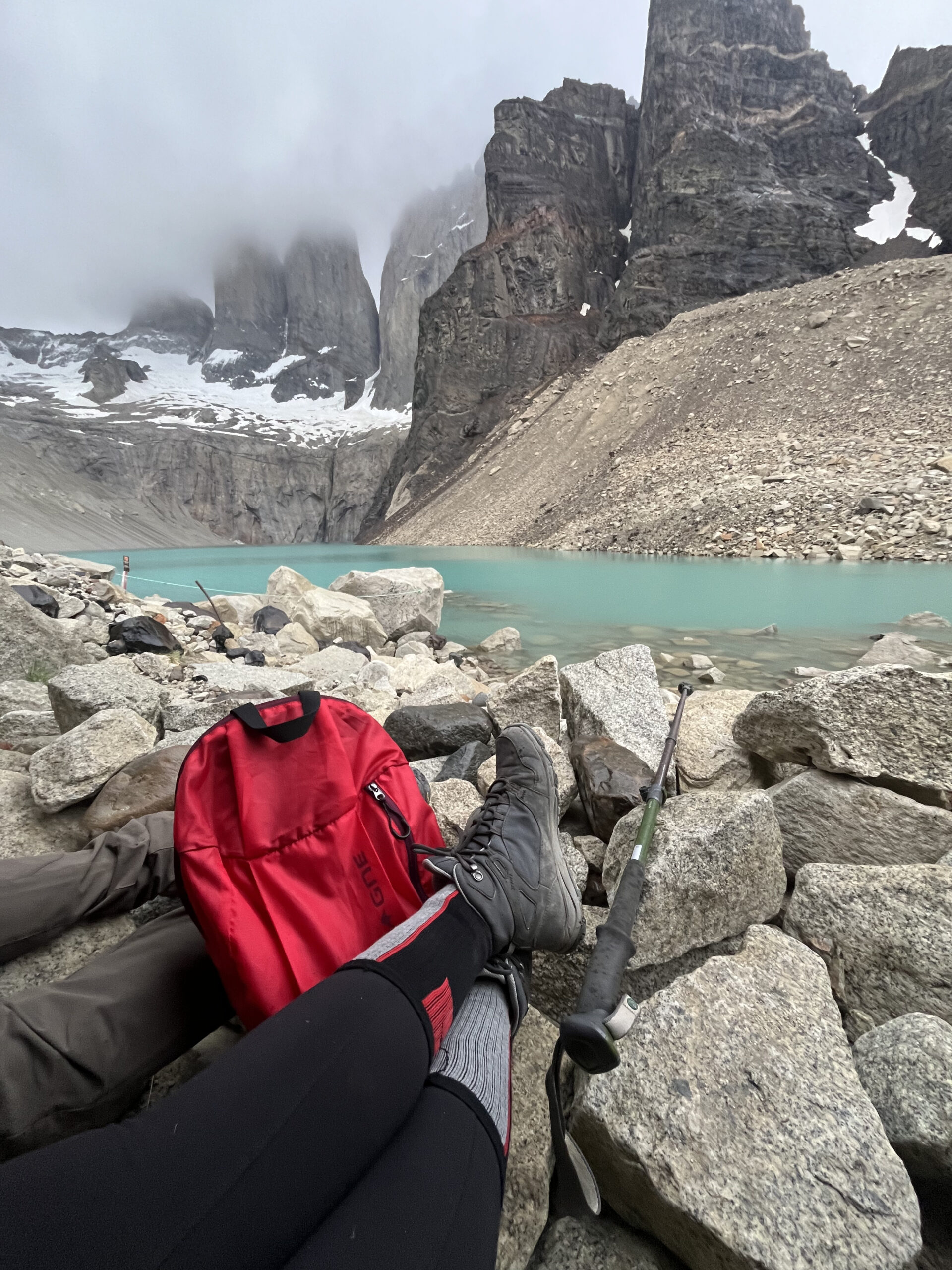In my previous article, I shared the story of my beautiful trip to Patagonia. Now, I’d love to offer you some tips and tricks for planning your own adventure.
Best Time to Go
The Patagonian summer (December to March) is the most popular and accessible time to visit. Expect long days, relatively stable weather, and busier trails. Shoulder seasons like October–November or March–April offer fewer crowds and beautiful light.
Where to Stay
When it comes to accommodation in Patagonia, hostels are often the best option – not just budget-wise, but also for the vibe. They’re social, welcoming, and usually full of other hikers and travelers eager to exchange trail tips or share a bottle of wine after a long day.
In El Chaltén, El Calafate, and Puerto Natales, you’ll find a great mix of charming hostels, rustic lodges, and family-run guesthouses. Many places offer shared kitchens, laundry facilities, gear storage, and early breakfast options for those heading out on the trails. If you’re hiking in Torres del Paine, plan ahead: spots in refugios and campsites inside the park must be booked months in advance, especially in high season. In Ushuaia, accommodations range from cozy hostels to boutique stays with Beagle Channel views but even there, the hostel scene often feels more like a mountain lodge than a party dorm.

What to Wear
So, what do you wear at the end of the world? Everything. All at once. In layers. Patagonia weather is famously indecisive – sunny one moment, horizontal rain the next. A solid base layer, a cozy fleece, and a waterproof shell will be your best friends (you’ll thank your jacket more than once). Hiking boots should be broken in, not breaking you in. Don’t forget a hat, gloves, and a buff – because even in summer, the wind has ‘opinions’. Add sunglasses and high SPF for when the sun comes out swinging. And trust me: always carry a water bottle, snacks, and a headlamp (make sure the battery is full – speaking from experience LOL) – because a “quick little hike” can easily turn into a half-day Patagonian epic.
Getting Around
- Buses connect major towns (book early in high season)
- Domestic flights save time (e.g., El Calafate ↔ Ushuaia) but you don’t get the views
- Cross-border travel between Argentina and Chile is easy (note: no fresh produce is allowed at customs! Eat your apple before you cross over)
Trekking Logistics
- Torres del Paine: Book campsites/ refugios months ahead. Plan your meals. Best: Instant outdoor meals. Some campsites have a kitchen but no utilities (you have to bring your own), others even have a bar or restaurant. Check in advance.
- El Chaltén: No permits needed, trails well-marked
- Bring cash for remote areas, and prepare for limited internet (in Torres del Paine you can buy internet time , but it’s expensive: 10 USD for 1h)
Wildlife Tips
- Penguins: Best seen November–March
- Wildlife: Spot guanacos, condors, foxes, and maybe even a puma!
Budget Notes
- Patagonia is pricier than other parts of South America
- Carry both Argentine and Chilean pesos
- Local Sim-Cards (or E-Sim Cards) are cheap but maybe you want to embrace the digital detox – it’s part of the magic

My personal recommendations:
El Chalten:
- Steaks & Wine: Parrilla La Oveja Negra, La Tapera, Estepa
Puerto Natales:
- Beer & Burgers: Baguales Brewpub
- Art: Ewagallery
- Crafts: Pueblo Artesanal Ether Aike
- Gelato: La Dorotea
- Meat: El Asador Patagonico
Ushuaia:
- Seafood & Fish: La casa de los Mariscos
- Drinks: Jeremy Button Gin Bar

Patagonia Packing List
Clothing
- Base layers (thermal)
- Fleece/down jacket
- Waterproof outer shell
- Hiking pants & quick-dry shirts
- Warm hat, sun hat, buff
- Gloves, wool socks
Footwear
- Hiking boots (waterproof!)
- Camp shoes/sandals
Daypack Essentials
- Water bottle/hydration system
- Snacks, headlamp, sunglasses
- First aid kit, sunscreen, trail map
Optional (Multi-day Treks)
- Sleeping bag/liner
- Earplugs, towel, journal
- Cooking gear if camping
Documents & Tech
- Passport, insurance, bookings
- Phone, charger, power bank
- Travel adapter (Type C/I/L)
Further reading
Want to dive deeper into Patagonia? Here’s my related piece:
: Practical Travel Tips for Patagonia




